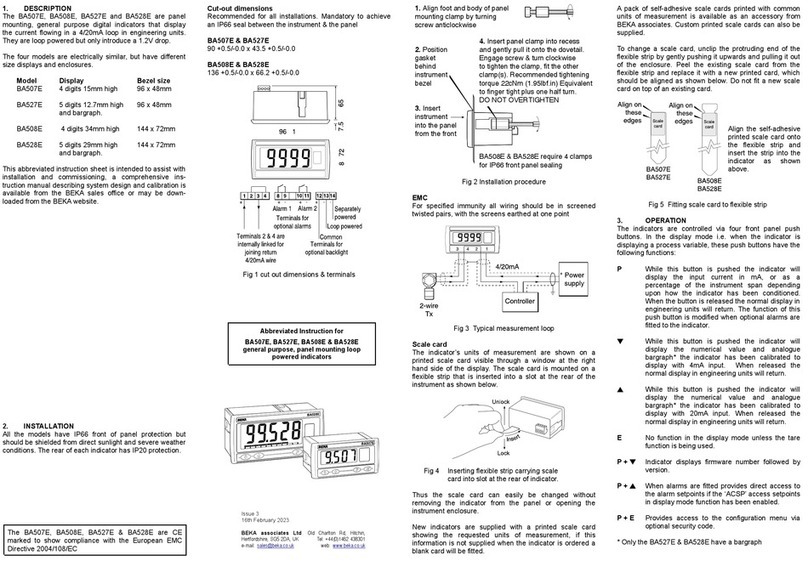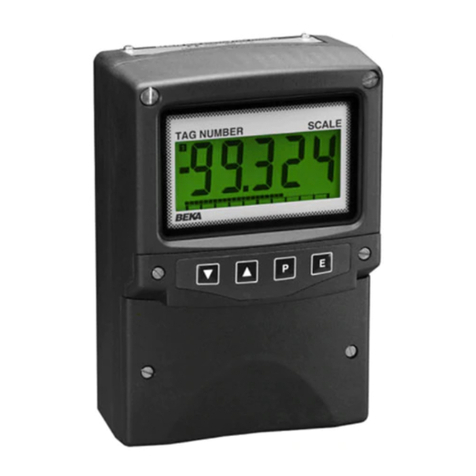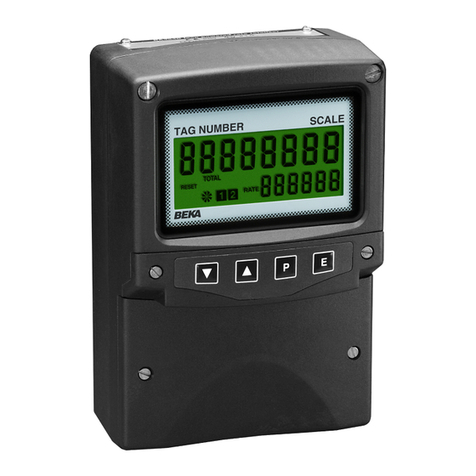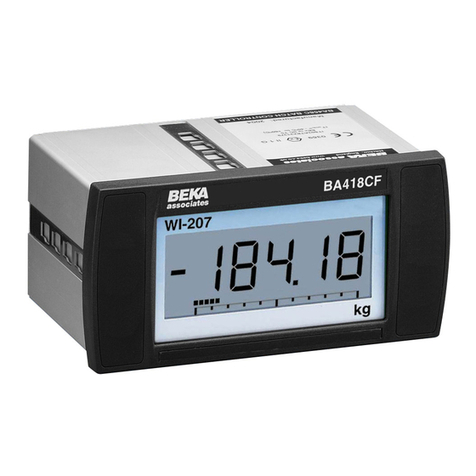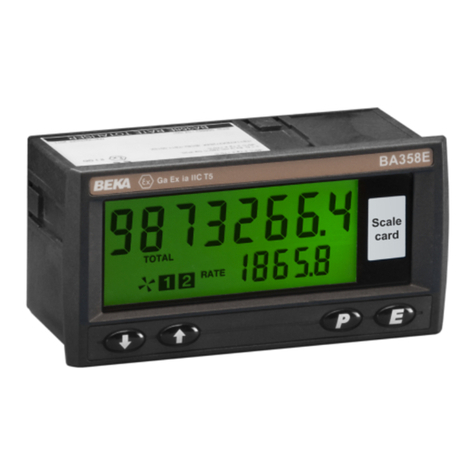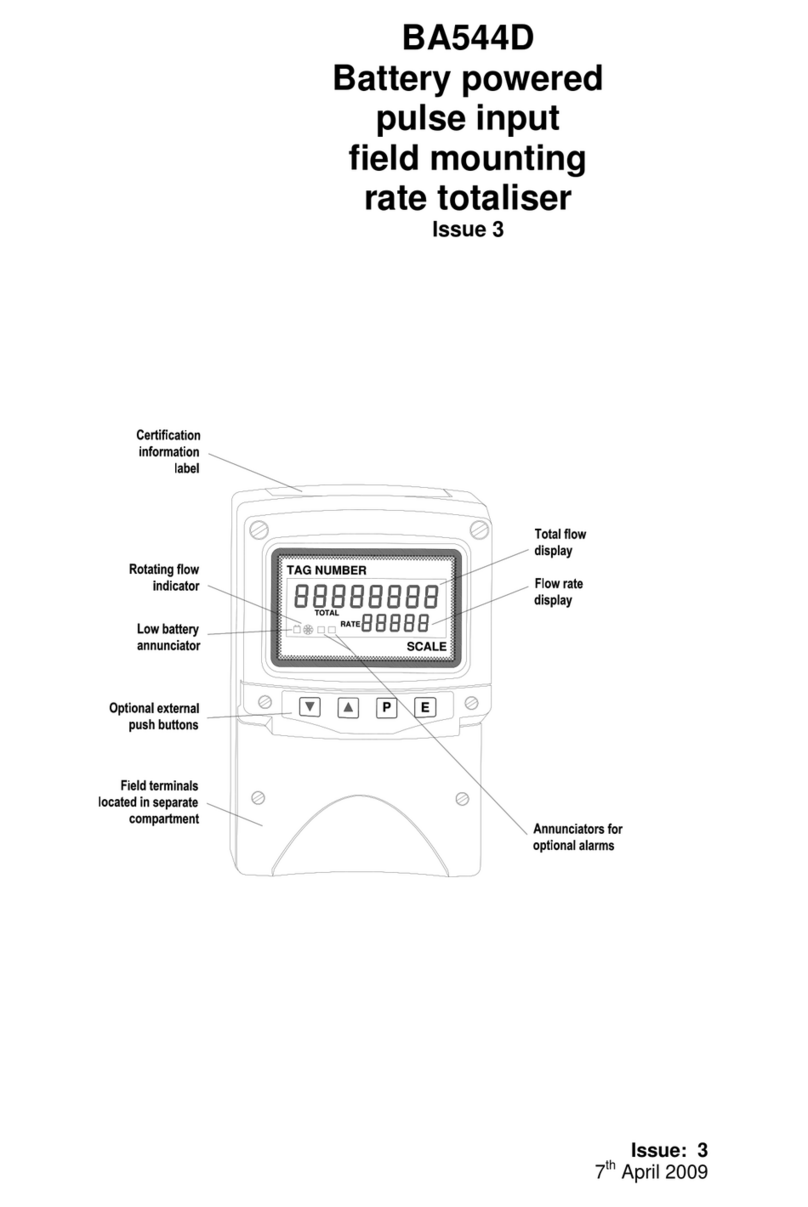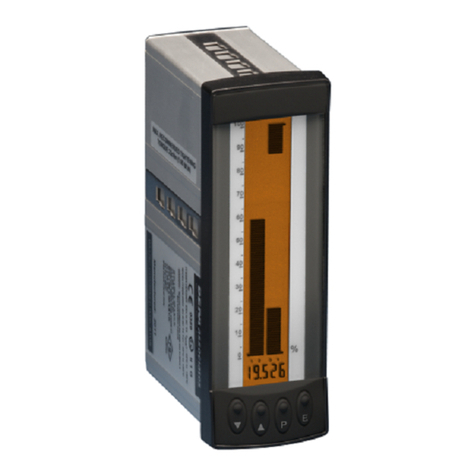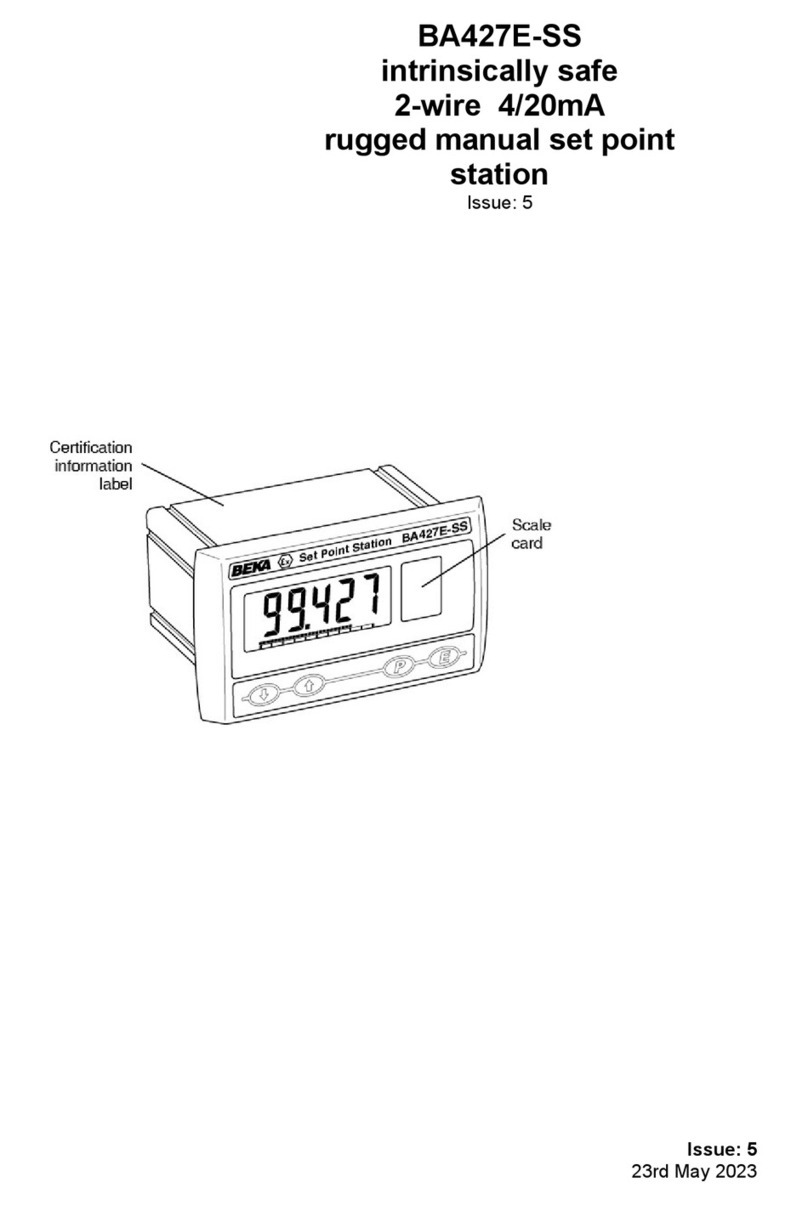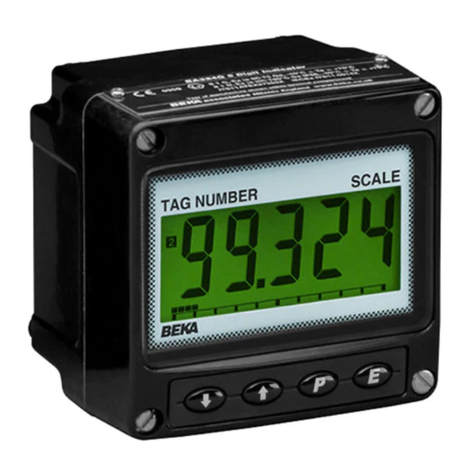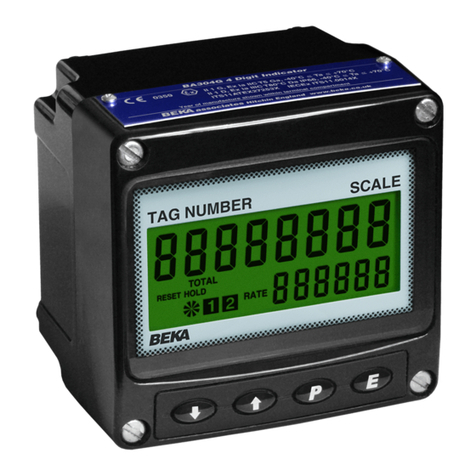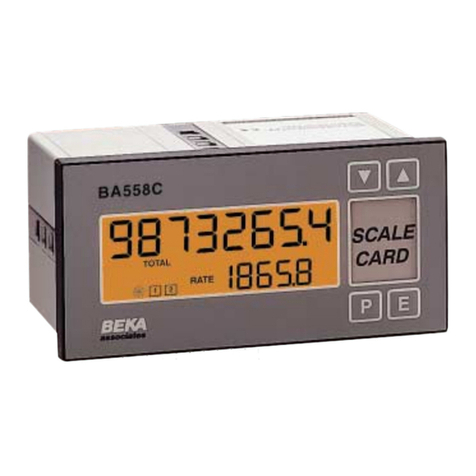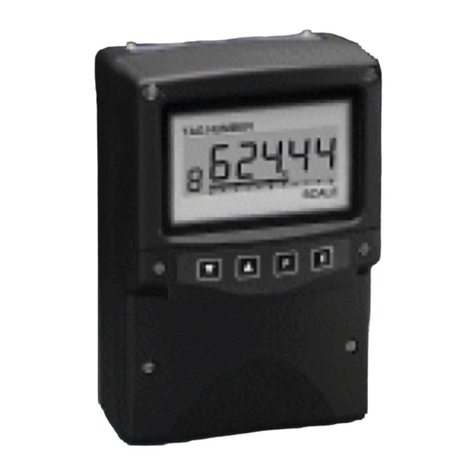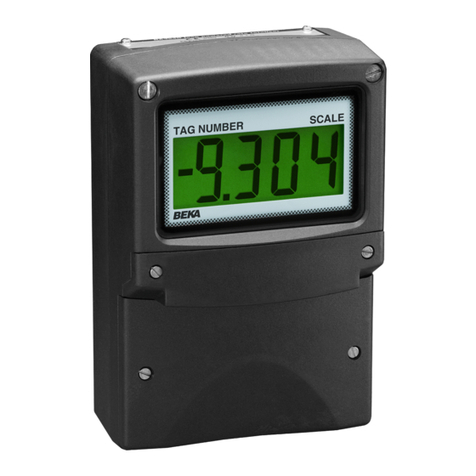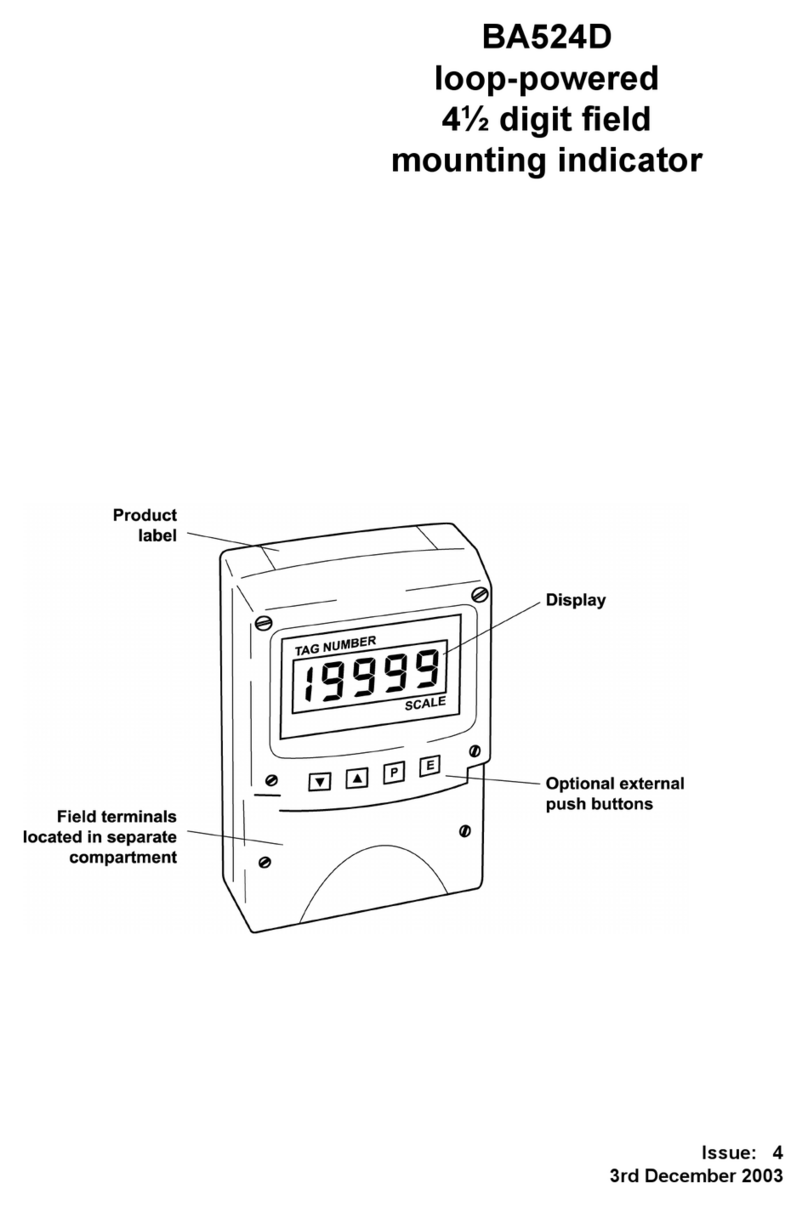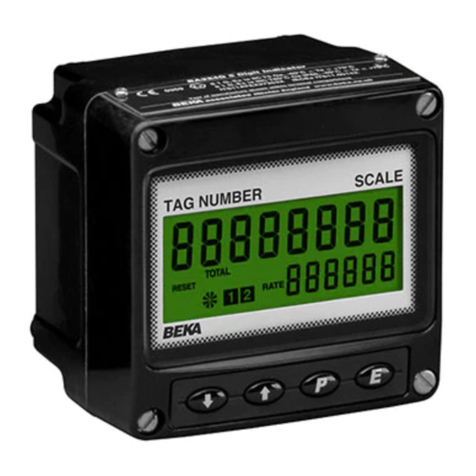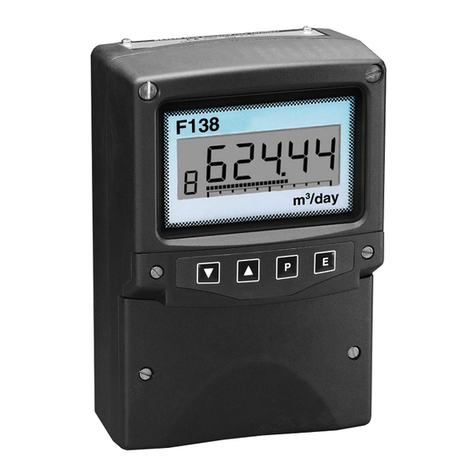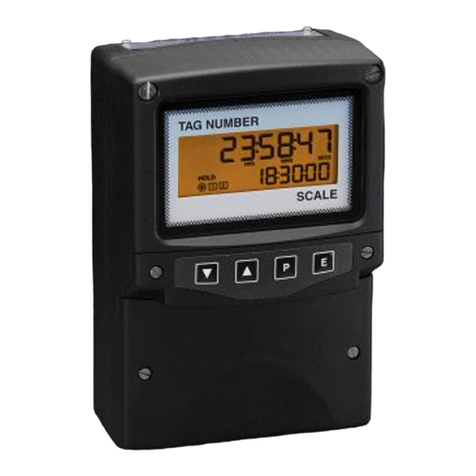
Full Description of Push Button Functions
PWhile this button is pushed the rate
display will show the input current in mA,
or as a percentage of the instrument
span depending upon how the instrument
has been configured. When the button is
released the normal display in
engineering units will return. The function
of this push button is modified when
optional alarms are fitted to the
instrument.
▼While this button is pushed the
instrument will show the calibrated rate
display with 4mA*input - usually zero for
flow applications. When the button is
released the flow rate will again be
displayed.
▲While this button is pushed the
instrument will show the calibrated rate
display with 20mA*input. When the
button is released the flow rate will again
be displayed.
EWhile this button is pushed the Rate
Totaliser will display the time in hours,
minutes and seconds since the
instrument was powered or the total
display was reset. The elapsed time is
not saved when power is removed.
E+▼While these buttons are pushed the total
display will show the least significant
eight digits of the grand total, and the
grand total annunciator will be activated.
E+▲While these two buttons are pushed the
total display will show the most significant
eight digits of the grand total and the
grand total annunciator will be activated.
After the two buttons have been pushed
for ten seconds ‘CLr no’ with the ‘no’
flashing will be displayed. If no action is
required, pressing Ewill return the
instrument to the operating mode.
Operating the ▼or ▲button will toggle
the display to ‘CLr YES’ with ‘YES’
flashing, operating the E button will then
clear the grand total and ‘Gt CLrd’ will be
displayed to confirm the operation. The
instrument will then automatically return
to the operating mode. Selectable
function in the configuration menu. See
section 6.17
Note: Totalisation will continue until ‘CLr
no’ or ‘CLr YE5’ are displayed.
▼+▲Resets the total display to zero when
these two push buttons are operated
simultaneously. Selectable function in the
configuration menu.
See section 6.17
P + ▼Rate Totaliser displays firmware version.
P + ▲Provides direct access to the alarm
setpoints when optional alarms are fitted
to the Rate Totaliser and the ‘ACSP’
access setpoints in display mode
function has been enabled.
See section 10.2.13
P+E Provides access to the configuration
menu via optional security code.
Note: *If the Rate Totaliser has been calibrated
using the CAL function, calibration
points may not be 4 and 20mA.
2.2 Displays
The BA354NE has two digital displays and
associated annunciators, plus a flow indicator as
shown on page 1.
Lower Shows the flow rate on the five digit
display plus sign 12mm high display.
Upper Shows the total flow on the eight digit
display (seven with negative sign) 18mm high
display which may be reset to zero by
operating the ▼+ ▲instrument push
buttons or by an external contact closure.
The rate and total displays may be interchanged,
see section 6.7
Flow This disc on the lower left hand side of
indicator the display rotates when the input
current exceeds 4.000mA, indic
flow is being detected by the Rate
Totaliser. For bi-directional flow, the disc
rotates when flow exceeds ±0.05% of
span.
Annunciators
Reset Activated when total display is reset to
zero by operating the ▼+ ▲buttons
simultaneously or by connecting the reset
terminals together.
Hold Activated when flow rate falls below the
clip-off value and totalisation is inhibited.
4
